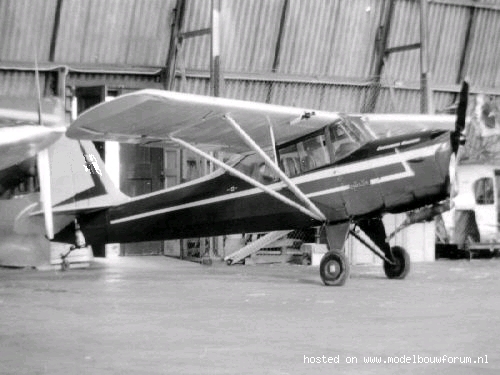dus ik denk een GETA Floatplane
In Japan, on an otherwise routine day in 1942, Fujita was called into the office of Prince Takamatsu, Emperor Hirohito's brother and an important military officer. The Prince informed Fujita of a plan to bomb the American mainland. Fujita was elated at the thought. He envisioned something on the magnitude of Pearl Harbor. "Los Angeles or San Francisco?" he asked, eager to learn of his target. "Oregon," answered his superior. Then Fujita was told the details of an operation the Japanese military believed could burn up a large part of the Northwest and destroy the morale of the American people. So began a mission which would propel Fujita into the history books -- a mission so secret that it was a total surprise to American military intelligence. It was so secret, in fact, that it was a half-day after the attack before anyone knew there was an attack at all!
On August 15, 1942, Fujita boarded a 1950-ton Japanese submarine for the trip to the American shore. Stored on-board the small sub was a single-engine airplane which would transport him and his navigator Shoji Okuda on their daring raid. By early September, the ship had reached its planned position off the Oregon coast. Every morning for days thereafter, the periscope would be raised only to reveal weather too foul to fly in. Dejected, Fujita would retreat to his room to wait for the next day. Finally, on the morning of September 9, the weather cleared and the sea was calm. Fujita was told to get ready. Along with his regular gear, he packed a family treasure -- a Samurai sword that had been in his family for 400 years. If he was forced down, he could use it to end his life rather than be captured by the enemy.
His 'geta' float plane was assembled and then readied, and he and Okuda boarded. Moments later, the tiny aircraft and its two-man crew were catapulted into the skies and headed toward the Cape Blanco lighthouse on a southeasterly course into enemy territory. The secret mission to bomb Oregon was underway.
It was peaceful in Brookings, Oregon. Fishermen were slowly sailing out of port, and the citizens were sitting down for breakfast. The sound of a small plane flying overhead didn't alarm anyone. Little did the people of Brookings realize that they were in the midst of an air attack -- the first-ever manned aerial bombing of the American mainland.
Fujita and Okuda proceeded east past Brookings and prepared to drop their load -- two 160-pound incendiary bombs. An hour after leaving the sub, they were nearly in position.
Back in Japan, military leaders anxiously awaited word on the mission. Would the bombs explode and ignite the forest into flames as planned? Would the fire spread to the cities -- burning homes and factories and sending the American people into panic and depression? They could only hope -- and wait.
While they pondered from afar, Fujita was at 8,200 feet over a heavily wooded forest. He ordered Okuda to drop the bombs. Then they watched as they fell to earth. But they didn't wait around to see what happened. Instead they set a course to the ocean and the sanctuary of their sub. They landed the pontoon-equipped plane and it was soon disassembled and stored away on ship. Everything was going perfectly -- that is, until the Americans appeared. They had spotted the enemy sub from their airplane, and minutes later they were directly above and attacking with bombs! But, sadly for the Yanks, they were too late. The Japanese sub slipped below the ocean surface, and even though it was slightly damaged, it successfully hid on the bottom and eventually escaped.
About the same time, a little past noon, Mt. Emily fire lookout Howard Gardner radioed in a fire report. Then, on foot, he set out to find it. So did Keith Johnson from his lookout at Bear Wallow. At 4:20 p.m., they located the blaze -- a few small and easily-extinguished fires that involved only seven trees. But, more importantly, they determined that the fires were not caused by lightning as they had originally suspected, but by bombs from an enemy aircraft! Excited, they radioed in their finding. Within hours, the U.S. military, the FBI, and other government agencies were on the scene -- trying to piece together clues as to how an enemy plane could have invaded and then escaped American airspace without a trace. Fortunately, weather conditions were not favorable for a forest fire on September 9.
Johnson, an 18-year-old forestry student at the University of Nebraska, would be kept on by the Forest Service for three months for questioning, missing his fall semester.
Back on ship, Fujita, Okuda and the rest of the sub crew waited patiently off shore, preparing for another attack. It came 20 days later -- this time in a grassy area east of Port Orford. But unlike the previous attack, when one of the two bombs exploded, this time both fizzled. To this day, neither bomb has been located.
Their mission accomplished, Fujita and company sailed back to Japan. Okuda was later killed in action, but Fujita survived the war to become a successful businessman. In 1962, twenty years after the attack, he returned to Brookings as a guest of its citizens. To make amends for his attack, he presented the city with his cherished Samurai sword. "It is the finest of Samurai traditions to pledge peace and friendship by submitting the sword to a former enemy," he said through a translator. The sword was placed in the mayor's office, where it remains today. This May, Fujita, 78, returned again to Brookings. He brought along his granddaughter. It would probably be his last chance to show her where he made history as the only flyer ever to bomb the United States mainland.






